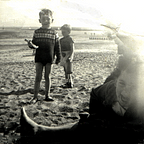Who was Good King Wenceslas?
Why did he go out on that frosty Feast of Stephen?
‘Good King Wenceslas’ (907–935) lived a short life but acquired several names. These include Saint Wenceslas I, the Duke of Bohemia and Václav.
His biography is like a plotline from Game of Thrones. When he was thirteen, his father (the Duke of Bohemia) was killed. This left his mother, Drahomira, to rule the province. She did this in the manner of Cersei Lannister.
Bossing Bohemia gave Dahomira a busy schedule. While she was seeing off her (many) enemies, Václav/Wenceslaus was home-schooled by his Christian grandmother, Ludmila of Bohemia. A very modern arrangement involving strong empowered women? Not quite.
The problem was that Grandma’s curriculum included a lot of Christian nonsense about peace, love and understanding. This was not to Drahomira’s liking and Drahomira did not do awkward conversations. Instead she had her mother-in-law whacked. According to legend, the assassins used Ludmila’s veil to strangle her. Nice touch
With Ludmila dead, Drahomira became regent. She set about persecuting Christians until her son was old enough to put away his Lego and take charge of the kingdom.
Boleslav the (very!) Bad
Wenceslaus — who according to legend was a kind, honest young man — vowed to be put a stop to all the murdering and mayhem. Obviously this would have been tricky with Mum around so he sent her into exile. He thought this might giver her space to reflect on her misdeeds (fat chance).
The new regime was popular. A long era of peace and stability beckoned. Wenceslaus even allowed his mother to move back into his castle.
Someone always has to spoil things. In this case the villain was Boleslav the Bad, the brother of Václav/Wenceslas. Continuing family tradition of homicidal treachery, Boleslav the Bad murdered his good brother.
Whether Drahomira was involved in this particular plot-twist is unclear. What we do know is that she fled from the court, never to return.
But what has this got to do with the carol?
Václav was later declared a Christian martyr and beatified. The Pope even took the liberty of posthumously promoting the new saint to King Wenceslas (he was technically a duke). Not that it mattered much by this point.
A cult developed around Wenceslas. He became a symbol of Czech nationalism, as well as a venerated Catholic saint. Tales were told of his boundless courage and self-sacrifice.
One of these legends was that he had sacrificed his own life to save that of his page. According to the version celebrated in Neale’s famous carol (1853) the two men were out in the snow giving alms to peasants on the 26th December ‘the feast of Stephen’:
When the snow lay round about/Deep and crisp and even
Brightly shone the moon that night/Though the frost was cruel
When a poor man came in sight/Gath’ring winter fuel
As night closed in, the page was in bad shape. In a reversal of the usual arrangement, the Good King ensured the miraculous survival of his servant at the expense of his own life.
This moving story, replete with Christian symbolism, is broadly in line with his reputation as an exceptionally pious king:
he went around to God’s churches and gave alms generously to widows, orphans, those in prison and afflicted by every difficulty, so much so that he was considered, not a prince, but the father of all the wretched.
Why ‘the feast of Stephen’?
Stephen is generally acknowledged as the first Christian martyr — his death witnessed and recorded by Paul. His ‘feast’ is the Second Day of Christmas — Christmas Day being the first.
In England, the Feast of Stephen was traditionally dedicated to charity, with a custom of parish churches collecting for the poor in alms boxes — listen here. This evolved into a more secular festival for workers. The name Boxing Day was made official in the 1830s and became a public holiday in the 1880s.
The initial religious association of St. Stephen’s Day (Lá Fhéile Stiofáin) retained a stronger cultural resonance in Ireland. In John McGahern’s Amongst Women, set in the 1950s, even the world-class curmudgeon, Moran, opens his home to visitors on Stephen’s Day:
